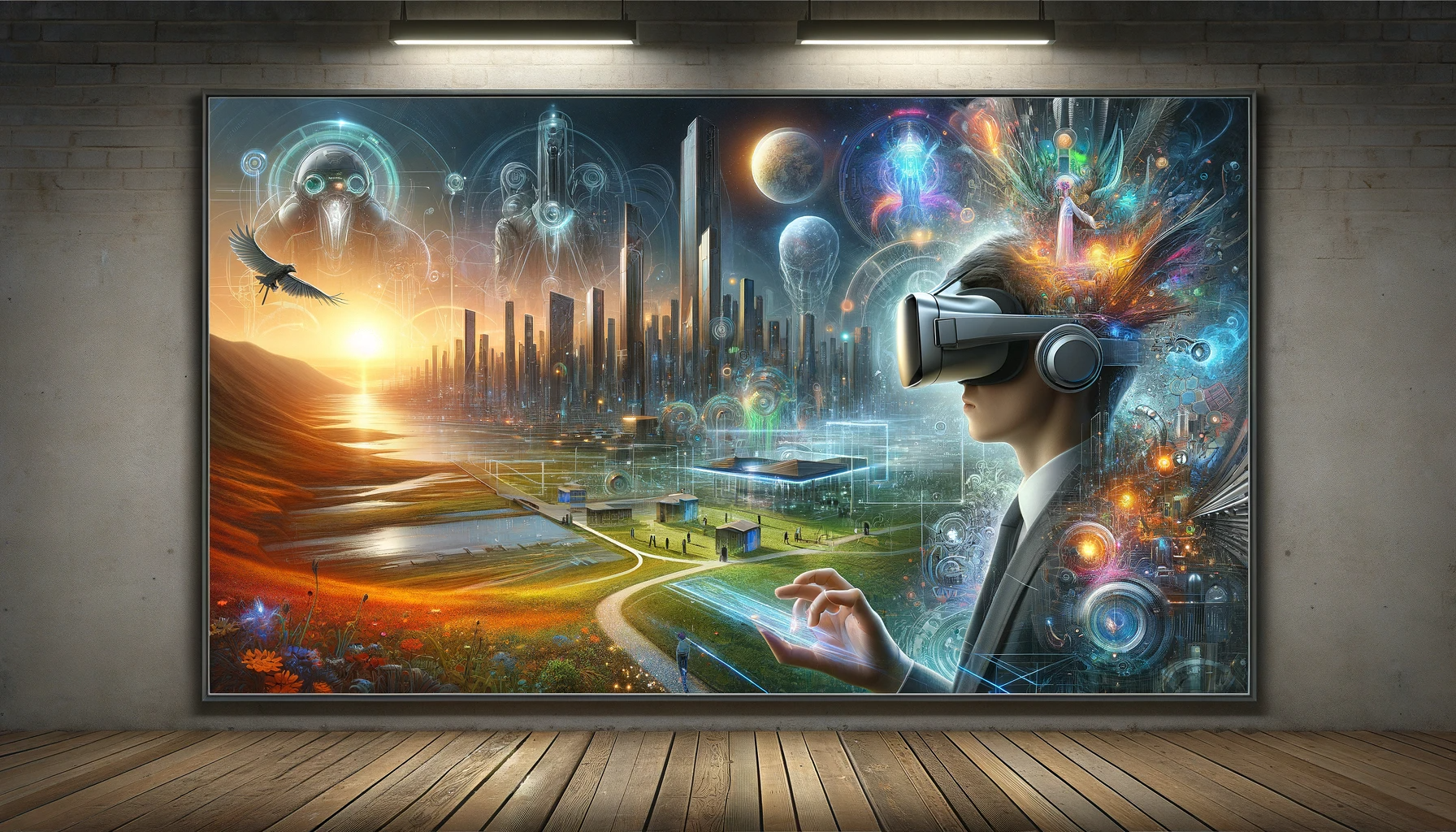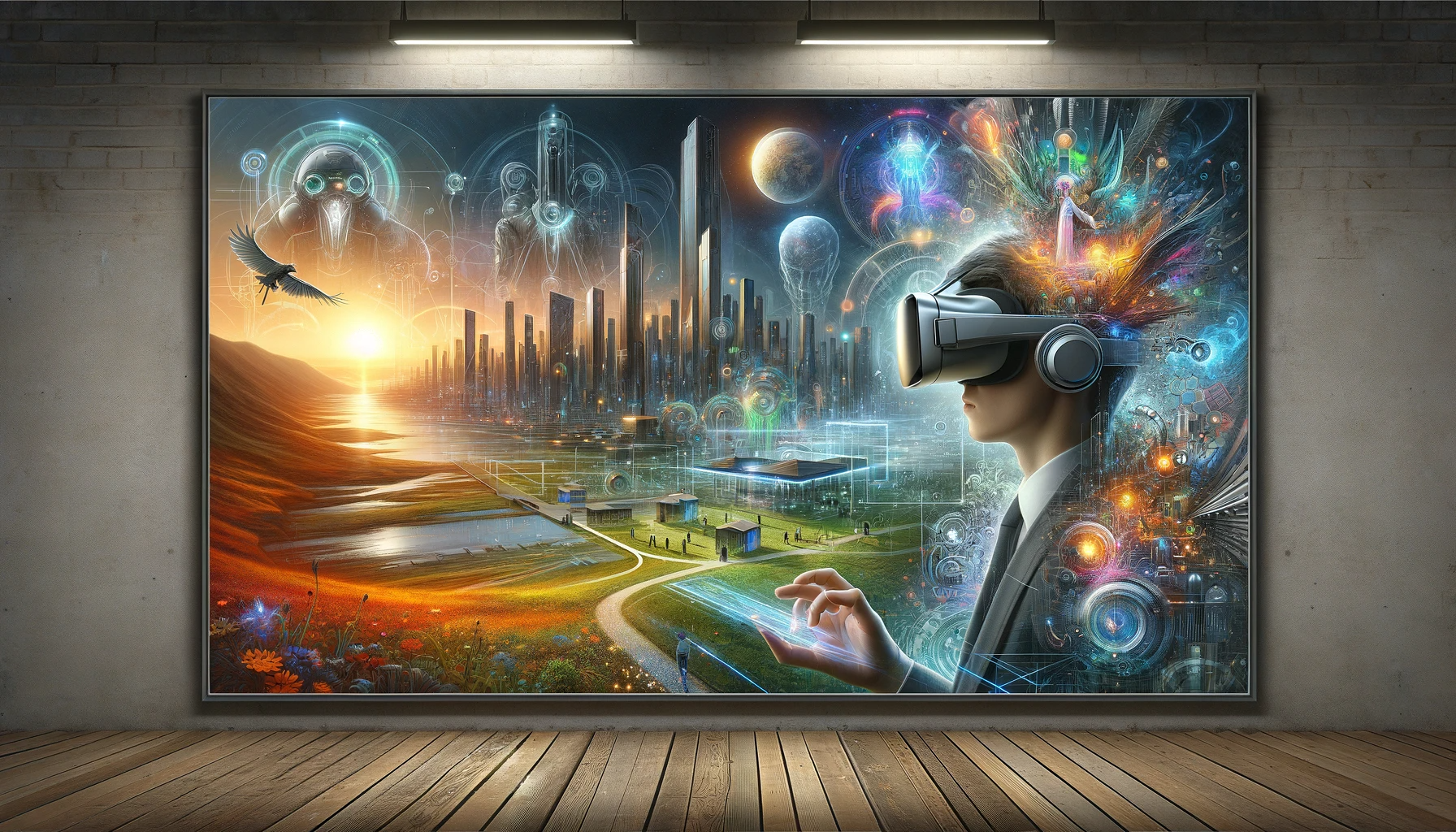Augmented Reality (AR) and Virtual Reality (VR) are rapidly transforming the landscape of mobile app design and web platforms, ushering in a new era of immersive experiences. AR enhances the real-world environment by overlaying digital elements, while VR creates entirely virtual environments, offering users a heightened sense of presence.
The integration of AR and VR into mobile apps and web platforms presents exciting opportunities for designers to create captivating, user-centric experiences that engage and delight users. This article delves into the potential of AR and VR integration, exploring its impact on both mobile app design and web platforms.
1. Understanding Augmented Reality (AR) and Virtual Reality (VR)

Augmented Reality (AR)
AR is a technology that superimposes computer-generated content, such as images, videos, or 3D models, onto the user’s real-world view. It bridges the gap between the physical and digital realms, allowing users to interact with digital elements in their immediate surroundings through their mobile devices or AR glasses.
Virtual Reality (VR)
VR, on the other hand, is a technology that transports users to entirely virtual environments, often using head-mounted displays or VR headsets. In this simulated world, users can interact with digital objects and surroundings, creating an immersive experience that feels almost real.
2. The Potential of AR and VR Integration
Enhanced User Engagement
The integration of AR and VR in mobile apps and web platforms offers a higher level of interactivity and engagement. Users are no longer passive consumers but active participants in the digital experience. This heightened engagement can lead to increased user retention and a deeper connection with the app or website.
Real-World Applications
AR and VR integration open up various real-world applications across industries. From interactive product visualization in e-commerce to virtual home tours in real estate, these technologies enable businesses to showcase their products and services in innovative and compelling ways.
Gamification and Entertainment
Gaming and entertainment industries have been quick to adopt AR and VR technologies. The seamless integration of these technologies into mobile apps and web platforms allows for immersive gaming experiences, creating a sense of adventure and excitement for users.
3. Design Considerations for AR and VR Integration
User-Centric Approach
Designers must prioritize user experience when integrating AR and VR. Understanding user behavior, needs, and pain points will help create meaningful interactions that resonate with the audience. User testing and feedback are crucial during the design process to refine the experience further.
Simplicity and Clarity
AR and VR experiences should be intuitive and easy to use. Overcomplicating the interactions or overwhelming users with too much information can lead to a frustrating experience. Keeping the design simple and clear will ensure a smooth user journey.
Visual Hierarchy and Cues
Incorporating visual cues is essential, especially in AR experiences. Highlighting AR elements and guiding users through visual cues can enhance the understanding of the digital content within the real-world context.
4. Overcoming Challenges in AR and VR Integration
Hardware Limitations
AR and VR experiences are heavily reliant on hardware capabilities. Not all mobile devices or web browsers support AR and VR technologies, which may limit the audience that can access these experiences. Designers must consider fall-back options for non-supported devices or browsers.
Motion Sickness and Disorientation
VR experiences, in particular, can induce motion sickness and disorientation in some users. Designers should implement smooth transitions and minimize abrupt movements to mitigate these issues.
5. Use Cases of AR and VR Integration in Mobile Apps and Web Platforms
E-Commerce and Retail

AR integration in e-commerce apps and web platforms allows users to visualize products in their physical space before making a purchase. This feature increases confidence in the product and reduces the chances of product returns.
Education and Training
VR integration in educational apps and web platforms offers interactive learning experiences. Students can explore historical places, dive into the depths of the ocean, or study complex structures, making learning more engaging and effective.
Tourism and Travel
AR applications in travel apps provide users with augmented tour guides, where they can discover historical facts, navigate city streets, and access travel information in real-time.
Entertainment and Gaming
AR and VR integration in gaming apps and web platforms provide users with thrilling and interactive gaming experiences that blend digital content with the real world.
6. Mobile App Design for AR and VR:
Mobile app design for AR and VR revolves around creating seamless and engaging experiences that leverage the power of these immersive technologies. Designers must understand the unique capabilities and limitations of AR and VR and apply user-centric principles to craft compelling interactions.
Here are some key aspects of mobile app design for AR and VR:
Intuitive User Interfaces: AR and VR interfaces should be intuitive and user-friendly to ensure that users can easily interact with the digital elements in their real-world or virtual environment. Gestures, voice commands, and head movements should be carefully incorporated to create a natural and immersive interaction flow.
Visual Feedback: Providing clear and real-time visual feedback is crucial in AR and VR experiences. Users need to understand the results of their actions instantly to maintain a sense of control and presence. Visual cues, animations, and particle effects can enhance the overall experience.
Contextual Design: Mobile apps utilizing AR should seamlessly integrate digital content with the user’s real-world environment. Designers should consider the context in which the AR content is presented and ensure that it enhances rather than distracts from the user’s surroundings.
Performance Optimization: AR and VR experiences require high-performance rendering to maintain a smooth and responsive user experience. Designers must work closely with developers to optimize the app’s performance and reduce latency to prevent motion sickness or disorientation.
7. Web Design for AR and VR:
Web design for AR and VR aims to provide users with immersive experiences directly from their web browsers. While full-fledged VR experiences may require dedicated headsets, many web-based AR experiences can be accessed from smartphones and desktops.
Here are some considerations for web design in AR and VR:
Browser Compatibility: AR and VR experiences should be designed to work across different web browsers and devices. Designers need to consider varying hardware capabilities and ensure fall-back options for non-supported browsers.
Progressive Enhancement: Designers should adopt a progressive enhancement approach to provide a basic web experience to all users while enhancing it for those with AR and VR capabilities. This way, the content remains accessible to a broader audience.
Performance and Loading Times: Web-based AR and VR experiences often require significant data and resource loading. Designers should focus on optimizing loading times and using efficient data compression techniques to minimize wait times.
User Guidance: Since web-based AR and VR experiences may be new to many users, providing clear guidance and instructions on how to access and interact with the content is essential. Tutorials or tooltips can be used to help users navigate the experience.
Scalability and Responsiveness: Web-based AR and VR experiences should be scalable and responsive to fit various screen sizes and resolutions. Designers must ensure that the content adapts to different devices while maintaining a consistent and immersive experience.
Mobile app design and web design for AR and VR demand innovative thinking and a deep understanding of user behavior and expectations. Whether it’s designing AR overlays that seamlessly blend with the real world or creating web-based VR experiences accessible from a browser, the goal remains the same – to provide users with immersive and captivating interactions. As technology advances and AR and VR become more accessible, designers will continue to explore new creative possibilities to push the boundaries of mobile and web experiences.
Conclusion
The integration of AR and VR into mobile apps and web platforms has opened up endless possibilities for immersive and user-centric experiences. By embracing a user-centric design approach and considering the challenges that come with AR and VR integration, designers can create captivating and seamless experiences that engage users in novel and exciting ways. As technology continues to advance, AR and VR will undoubtedly play an increasingly significant role in shaping the future of mobile app design and web platforms.
Immersive design is not limited to entertainment; it also has the potential to enhance productivity, creativity, and learning. As technology continues to advance, incorporating immersive design principles into mobile apps and web platforms will become increasingly prevalent, offering users more engaging, memorable, and effective digital experiences.
AR and VR technologies enable users to transcend the confines of traditional screens, immersing them in rich, three-dimensional worlds or enhancing their real-world surroundings with digital overlays. This article delves into the various elements of immersive design. It also explores the potential of immersive design to revolutionize industries like gaming, e-commerce, education, and healthcare.
Author Bio
Atman Rathod is the Co-founder at CMARIX TechnoLabs Pvt. Ltd., a leading web and mobile app development company with 16+ years of experience. He loves to write about technology, startups, entrepreneurship and business. His creative abilities, academic track record and leadership skills made him one of the key industry influencers as well.





